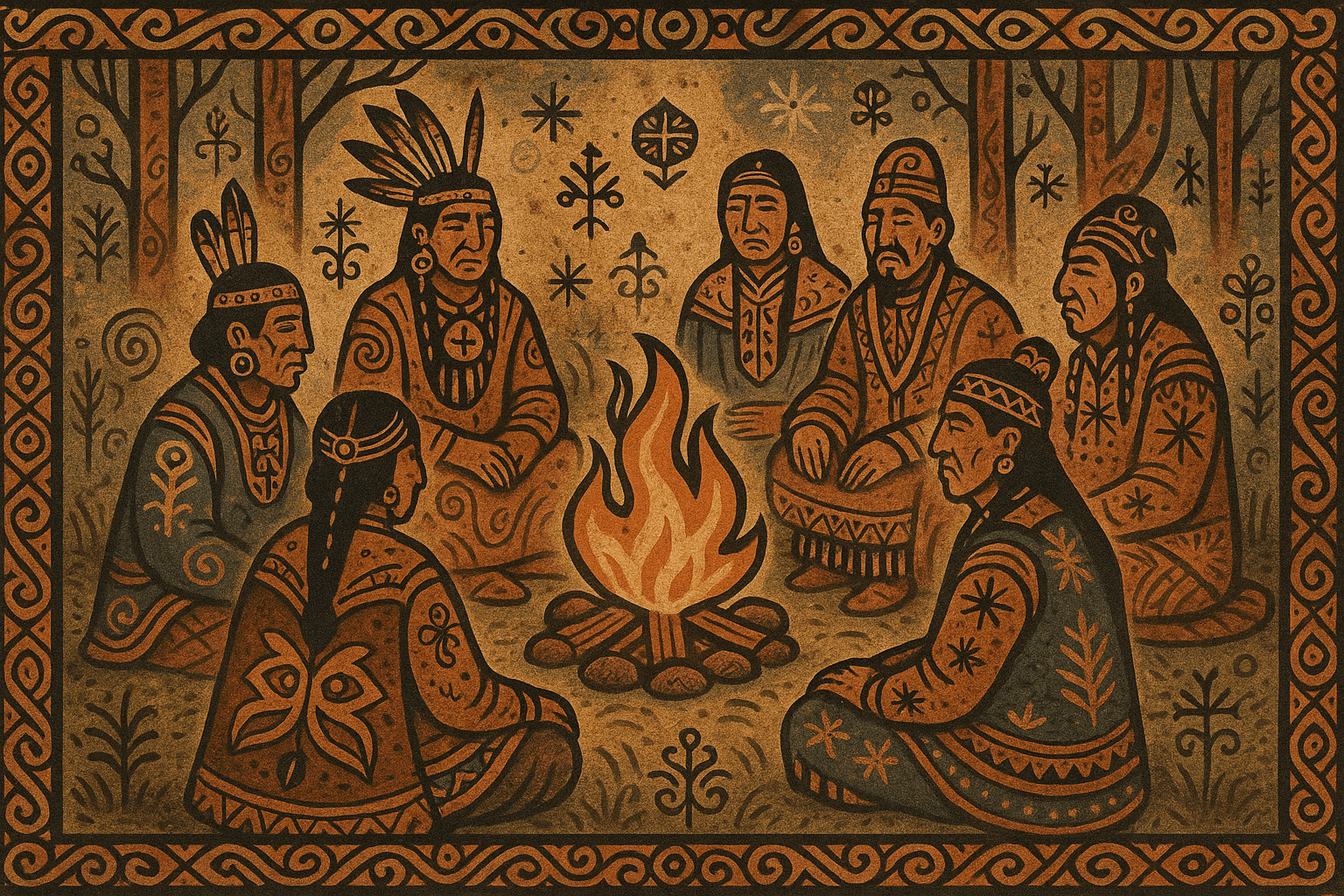The Mi’kmaq Sante Mawiomi represents a brilliant political structure designed to balance the autonomy of local communities with the collective strength and unity of an entire nation. It’s a story of consensus, diplomacy, and a deep connection to the land that challenges many preconceived notions about pre-colonial societies.
The Foundations of Mi’kmaq Governance: Mi’kma’ki and the Seven Districts
To understand the Grand Council, one must first understand the Mi’kmaq worldview and their relationship with their ancestral territory, Mi’kma’ki. Spanning what is now Canada’s Atlantic provinces (Nova Scotia, Prince Edward Island, New Brunswick) and the Gaspé Peninsula of Quebec, Mi’kma’ki was not seen as a territory to be owned, but as a home to be stewarded. This vast homeland was traditionally divided into seven distinct districts, a division that formed the very bedrock of their political organization.
The seven districts were:
- Unama’kik: “Land of Fog” (Cape Breton Island)
- Epekwitk aq Piktuk: “Lying in the Water” and “Explosive Place” (Prince Edward Island and the Pictou area of Nova Scotia)
- Eskikewa’kik: “Skin Dressers’ Territory” (Eastern Shore of Nova Scotia)
- Sipekni’katik: “Wild Potato Area” (Central mainland Nova Scotia)
- Kespukwitk: “Land’s End” (Southwestern Nova Scotia, including the Yarmouth area)
- Siknikt: “Drainage Area” (The Chignecto Isthmus in New Brunswick)
- Kespek: “Last Land” (The Gaspé Peninsula in Quebec)
Each of these districts functioned as a semi-autonomous political unit. This decentralized structure ensured that local issues were handled by the people most familiar with them, reflecting a core principle of Mi’kmaq governance: power begins at the community level.
A Tiered System of Consensus
The Mi’kmaq political system was a nested hierarchy built on consensus, where leadership was earned, not seized. It flowed organically from the family unit all the way up to the national council.
At the most local level, a village or an extended family group would be led by a Saqamaw (Chief). A Saqamaw wasn’t a ruler in the European sense; they were respected leaders chosen for their wisdom, generosity, skills as a hunter or mediator, and their ability to build consensus. While the position could be hereditary, a chief’s son who lacked these qualities would not be accepted by the community. The Saqamaw’s authority came from the respect they commanded, not from coercive power.
The next tier was the District Council. This council was comprised of the local Saqamaws from all the villages within that district. From among them, they would select a District Chief. This leader was responsible for managing larger issues, such as allocating seasonal hunting and fishing territories among communities and resolving disputes that couldn’t be settled at the village level. It was a regional government that ensured cooperation and stability within the district.
Finally, at the apex of the political structure, was the Sante Mawiomi, the Grand Council. This was the national government of the entire Mi’kmaq Nation. The District Chiefs from all seven districts sat on this council, ensuring that every corner of Mi’kma’ki had a voice.
The Role of the Grand Chief and the Grand Council
The Grand Council was traditionally chaired by the Grand Chief, or Kji-Saqamaw. Historically, the Grand Chief was the District Chief of Unama’kik (Cape Breton), where the Grand Council traditionally met on a small island in the Bras d’Or Lakes called Mniku (Chapel Island).
The Grand Chief was not an absolute monarch. Their primary role was to act as a head of state and a facilitator, guiding the council toward consensus on matters of national importance. These matters included negotiating treaties with other Indigenous nations, deciding on questions of war and peace for the whole nation, and addressing issues that affected all seven districts. Decisions were not made through a simple majority vote. Instead, discussions would continue—sometimes for days—until a general agreement was reached that everyone could support, a process that prioritized unity and the collective good over swiftness.
The Grand Council also included other important, specialized roles. The Kji-keptin, or Grand Captain, was the head of the Smaknisk (warrior society) and was responsible for organizing national defense. The Putu’s, or Wampum Belt Keeper, was the nation’s historian and constitutional scholar, responsible for reading and interpreting the sacred wampum belts that recorded laws, treaties, and histories.
A Living Constitution in Shells and Beads
While the Mi’kmaq did not have written documents in the European tradition, their system of governance was far from unrecorded. They used wampum belts—intricately woven belts made from purple and white quahog clam shells—as living constitutional documents.
These belts were not currency. They were sacred archives. Each design and pattern held specific meaning, chronicling historical events, codifying laws, and ratifying treaties. During Grand Council meetings, the Putu’s would present the relevant wampum belts, “reading” the patterns to remind the assembled chiefs of past decisions, treaty obligations, and the principles that guided their nation. This ensured continuity and held leaders accountable to the laws and history of their people.
The Enduring Legacy of the Sante Mawiomi
The arrival of Europeans and the subsequent process of colonization profoundly disrupted this elegant system. Canada’s Indian Act of 1876 forcibly imposed a foreign system of elected band councils, designed to undermine and replace traditional Indigenous governments like the Sante Mawiomi.
Despite centuries of pressure, the Sante Mawiomi was never extinguished. It continued to operate, often in the shadows, as a symbol of Mi’kmaq sovereignty and a keeper of traditional knowledge and spiritual authority. Today, the Grand Council continues to exist as the traditional government of the Mi’kmaq Nation. It advocates for treaty rights, cultural preservation, and national unity, co-existing—and sometimes in tension with—the federally imposed band council system.
The Mi’kmaq Sante Mawiomi stands as a powerful testament to the political ingenuity of Indigenous peoples. It was a system that fostered local freedom while ensuring national strength, governed by consent rather than command. It reminds us that the history of democracy is far richer and more diverse than we are often taught, with deep roots in the lands and philosophies of North America’s first peoples.
